North Jersey vs. South Jersey
now browsing by category
New Jersey Population Trends – North, South and Central 1840 – 2010
I’ve been pondering the differences between North Jersey, South Jersey and even Central Jersey for some time now. The more I look into the matter the more questions I have. It doesn’t seem enough just to identify regions and their differences but rather also to ask why the distinctions came to be.
In my last post, “Possibly the Split is East Jersey,West Jersey, not North Jersey, South Jersey“,I discussed the origins of two Jerseys — East and West — during Colonial times. East Jersey related more to the Hudson River and New York, while West Jersey identified more with the Delaware River and Philadelphia. Transportation by water – especially the movement of goods – was essential to the development of the area. In the east, development thrived along the west bank of the Hudson River, Kill Van Kull and Arthur Kill. Camden, Trenton and Burlington grew along the east bank of the Delaware Bay (and River) from the Atlantic Ocean to the falls near Trenton where the river was not navigable. The population along the Atlantic shoreline was sparse due to the lack of safe harbors and anchorages for sailing vessels. It wasn’t until about the end of the first quarter of the 19th century that a maritime connection was made between the upper Delaware River and New York — the Morris Canal. At about the same time, the Delaware and Raritan Canal opened providing a shortcut between New York and Trenton and Philadelphia.

Statistics for New Jersey Counties with a population density of less than 500 persons per square mile.
One of the distinctions often made between North Jersey and South Jersey is that “North Jersey is more crowded”. While that may be true of some of the North Jersey counties, it’s not true for all. Some of the Counties that I have described as belonging to North Jersey have population densities that are remarkably similar to other counties in the most southern part of the state. It seemed to me that Jersey population trends warranted some looking into. I started by reviewing the New Jersey County Statistics that I had gathered for my first post “Where am I — North Jersey, South Jersey, or Possibly Even Central Jersey?” What I discovered was that some of the counties in North and Central Jersey had population densities as low or lower than those in the very southern portion of the state. The following table shows that seven counties have population densities of under 500 persons per square mile. So if the common wisdom “North Jersey is more densely populated than South Jersey” is not completely accurate, what else may we determine about New Jersey by the way its population has changed? What were the changes anyway?
Luckily, I didn’t need to tabulate all of the New Jersey population data myself. I first came upon New Jersey Population Trends 1790 – 2010 — a nifty excel spreadsheet created by none other than the NJ Department of Labor. From this data I was able to develop the graphs below, which portray the New Jersey population changes by region and the regional changes by county. The first graph shows that the North Jersey population grew earlier than that of either South Jersey or Central Jersey, who maintained similar growth patterns until about 1860 (although the Central Jersey population was slightly higher), when Central Jersey’s growth rate increased at pace that has exceeded South Jersey through the latest census. North Jersey expanded the most quickly beginning in the mid-19th century and continuing until about 1960 when its population dipped for approximately twenty years. The North still leads in population but Central Jersey continues to narrow the gap.
The second chart shows the regional trends in New Jersey population as a percentage of the total number of people living in the state. At the time of the first census the three regions claimed similar portions of the state’s residents – North and Central Jersey with approximately 35% and South Jersey with almost 30%. Almost immediately, North Jersey’s population took off while the South and Central Jersey shares of the pie declined. The disparity reached its peak in the early part of the 20th century when Central Jersey began to close the population gap. South Jersey has not kept pace with the other regions and now contains only 20% of the New Jersey population. That, of course doesn’t tell the complete story — growth within the regions was far from uniform — creating a need in me to develop additional graphs.
The graphs that follow show changes in population by county from 1790 – 2010. I’ve grouped them by region in the hope that the display of information would be clearer. Please note that the county population data prior to the 1860 census is not completely accurate (sufficient, I believe, for this discussion), as it has not been adjusted for the following jurisdictional changes.
- Warren County was incorporated in November 1824, from portions of Sussex County.
- Atlantic County was created in February 1837, from portions of Gloucester County.
- Passaic County was created in February 1837, from portions of both Bergen County and Essex County.
- Mercer County was founded February 1838, from portions of surrounding counties.
- Hudson County was formed from Bergen in 1840.
- Camden County was formed in March 1844, from portions of Gloucester County.
- Ocean County was established in 1850 from portions of Monmouth County except for Little Egg Harbor Township which seceded from Burlington County in 1891.
- Union County was formed in March 1857, from portions of Essex County.
I’ve left the evolution of the NJ County boundaries to be covered in a future post.
The seven North Jersey counties all had small populations until about 1830 when Essex County’s growth rate began to rise more quickly than the rest. Hudson County took off in 1850, its development going stride for stride with Essex County until the turn of the 20th century when Essex surged ahead for good – late bloomer Bergen County surpassed Essex County in total population in 1980. Hudson County, whose growth potential was limited by being the smallest county in land area (47 sq. mi.), remains on top of the list for highest population density (13,495 persons per sq. mi) having a density more than twice than of Essex County. Passaic County has grown quite steadily from the mid 19th century to the present while Morris County’s growth spurt waited until after World War II. By contrast, Sussex and Warren Counties have experienced a much lower increase in population than the rest of North Jersey.
In Central Jersey, Midllesex, Mercer and Union Counties saw the earliest growth. Union County, part of Essex until 1857, took the lead in about 1900, to be surpassed by Middlesex County in about 1960. Monmouth County which had been in fourth place behind Mercer County moved up to third place in the early 1950’s and, in the 1970’s passed Union County for second place in Central Jersey. Ocean County’s growth started to skyrocket in the 1950’s bringing it into the third spot in 2010. As the largest county in area, Ocean still ranks in the bottom third of population density. Somerset and Hunterdon Counties have expanded at a more modest pace yet Somerset County has a population density similar to neighboring Morris County while Central Jersey’s Hunterdon County is as sparsely populated as Warren County in the North and Cumberland County far to the south.
In the early 1800’s Burlington County was the South Jersey population leader – not surpassed by Camden County until the 1870’s. Today Camden County is the most populated of the South Jersey counties and has a density of almost twice that of runner-up GloucesterCounty. Atlantic County was quite sparsely populated until the late 1800’s. It currently has a population similar to that of Gloucester County, which did not see significant growth until the 1950’s. The most Southern Jersey Counties – Salem, Cumberland and Cape May have not experienced the population growth of the rest of the South Jersey region. In fact, Salem County’s population density of 196 persons per square mile is less than 70% of that of Sussex County, the second most sparsely populated county in New Jersey.
Why did the counties of the State of New Jersey develop at such different rates? What factors played a role in more rapid growth:
- Transportation?
- Sources of power for industry?
- Proximity to New York and/or Philadelphia?
- Natural and recreational resources?
Possibly the split is East Jersey, West Jersey not North Jersey, South Jersey
New Jersey has been split since Colonial times – In fact, the splitting occurred precisely at the time this piece of geography became known as New Jersey. The great divide was not, however, between North Jersey and South Jersey; it was between East Jersey and West Jersey.
In March 1664, King Charles II of of England deeded land, including the area that would become New Jersey, to his brother James Duke of York (who would later become King James II). James, in turn, made grants to his friends Sir George Carteret and John, Lord Berkeley – Carteret getting the East and Berkeley the West. The area that would become known as New Jersey in honor of Carteret’s defense of the Isle of Jersey in the English Channel.
I stumbled upon this fact many years ago when I located a book in the bargain bin at the Rutgers University Book Store and made it mine for the sum of three dollars. This book The Story of New Jersey’s Civil Boundaries 1606 – 1968 by John P. Snyder was published by the Bureau of Geology and Topography in 1969. It was dedicated to the Land Surveyors of New Jersey by Robert A. Roe, Commissioner of the Department of Conservation and Economic Development (yes conservation and development were linked until 1970 when NJDEP came into being), who would eventually move on to Congress (and later have a federal building and a highway named for him). While this book languished on my bookshelves for many years and many moves I knew it would one day come in handy. While Mr. Snyder helped to launch me on my quest for the truth about these ancient New Jersey rivalries, I also found invaluable information from Rutgers University Library, the New Jersey State Archives, NOAA’s Historical Charts and Bob Barnett’s extremely informative website, westjersey.org.
It seems that in March 1674, a mere ten years after receiving the grant, Lord Berkeley sold his half interest in New Jersey to John Fenwick who would in turn convey over nine tenths of West Jersey to a group headed by William Penn. In July 1674 the Duke of York issued a patent for East Jersey to Sir George Carteret which granted him the part of New Jersey north of a line connecting Barnegat Bay to Pennsauken Creek at the Delaware River- a line that would come into almost immediate dispute.
Over in East Jersey in the 1660’s the Governor had been busy handing out patents – First for Elizabeth -Town ( Dec. 1664) which would quickly cut off Woodbridge which would split further to create Piscataway – later for Middletown and Shrewsbury (1665). In 1668 Bergen Township was chartered having begun its European existence as part of the Dutch settlement of New Amsterdam. By 1675 four counties had been created around the lines of development – these would be named Bergen, Essex, Middlesex and Monmouth in 1683.
In 1676 Carteret entered into the Quintipartite Deed with the West Jersey Proprietors which established the boundary line between East Jersey and West Jersey as a line starting from the coast at Little Egg Harbor to the point on the Delaware River where it reaches 41 degrees 40 minutes latitude. The Duke of York confirmed this line with a deed to the West Jersey Proprietors in August 1680. It wasn’t until 1687 that anyone got around to establishing the line with a boundary survey. In that year George Keith, Surveyor General for East Jersey, ran the line from Little Egg Harbor to a point on the South Branch of the Raritan River, where he stopped – probably because there was already a dispute as to where the line was established on the ground. This line was eventually resurveyed in 1743 by John Lawrence, also a surveyor from East Jersey. The Keith Line remains the dividing line between Burlington County and Monmouth and Ocean Counties. For a brief period of time (1668 – 1695) Governors Daniel Coxe of West Jersey and Robert Barclay of East Jersey agreed upon a boundary that followed the Keith Line to the Raritan River and then meandered in a northeasterly direction to the New York border. This line, which placed Sussex and Morris Counties in West Jersey, was abolished by the colonial legislature in 1719.
Of course in New Jersey nothing is easy. The dispute between East Jersey and West Jersey was complicated by the lack of agreement as to the location of the boundary between New York and New Jersey. In May 1719, a tripartite deed was signed by New York, East Jersey and West Jersey establishing the New York/ New Jersey line at a point more southerly on the Delaware River than New Jersey had claimed. Once the king’s commissioners completed the survey of the New York/New Jersey line in 1774, West Jersey looked to modify the East Jersey / West Jersey Line once again. That proposal was never adopted and the Lawrence line remained as the official dividing line between East Jersey and West Jersey. Of course the jurisdictional disputes between New York and New Jersey continued until the 1990’s when a disagreement about the status of Ellis Island was decided by the US Supreme Court.
This historical review provides me with a few new insights about the debate about “Are we in North Jersey or South Jersey?”
- By 1775, development was greatest near the large navigable waterways.
- Hudson River – East Jersey
- Delaware River – West Jersey – although development upstream of the falls near Trenton was not as rapid
- By 1775 Burlington, Gloucester, Salem, Cumberland and Cape May Counties were established as parts of South Jersey
- Hunterdon and Sussex Counties seemed to be more aligned with West Jersey due to their access to the Delaware River
- In 1775 Mercer County has no identity. It eventually was created in 1838 from parts of Hunterdon, Burlington and Middlesex Counties. Trenton didn’t become the state capital until 1790. This seems like an area with a potential identity crisis
- Ocean County didn’t exist in 1775 either and it’s a long sailboat ride to there from either New York or Philadelphia, anyway.
So, for the moment I’m sticking by my proposition that there are three distinct regions of New Jersey — ,North South and Central but I’m beginning to see the merits of the argument that the state is split in two – but North Jersey/ South Jersey I’m not convinced.
The author, Carl E. Peters is one of fewer than 10 people licensed by the State of New Jersey as a Professional Engineer, Professional Land Surveyor, Professional Planner, Construction Official, Building Subcode Official and Plumbing Subcode Official. He is also a Certified Municipal Engineer and Mediator and founder of Carl E. Peters, LLC
North, South or Central Jersey – What does the government say?
North Jersey, South Jersey or Central Jersey – are governmental regulations needed?
I’ve previously advanced the following proposal – There are three regions in New Jersey– North, South and Central Jersey, each containing seven counties. Also discussed was what some other people are saying. For example, of the people surveyed by Monmouth University/Gannett New Jersey almost half felt that Trenton Princeton and Red Bank were in South Jersey. Twenty Five to Twenty nine percent of this same group said Flemington and Lambertville were also in South Jersey (of course 28% of the people surveyed hadn’t heard of either of these towns). Since New Jerseyans seem so unclear about the location of these boundaries, I’ll need to look for answers from an authoritative source – the government.
Now, we in New Jersey all know that the state government and sometimes the federal and local governments want to regulate almost every aspect of our daily lives. Certainly they must have created a statute or regulation that defines these regional boundaries. As an engineer, I have the privilege of working with many departments in the state bureaucracy – Transportation, Environmental Protection and Community Affairs to name a few.
The NJ Department of Transportation Says:
Starting with the Department of Transportation, we find that they have divided the state into three regions, North, South or Central Jersey. They agree with me about the South Jersey Region but have given Union County to North Jersey and reserved a small portion of Warren County for Central Jersey.
But the Metropolitan Transportation Planning Areas Disagree:
Next we have three metropolitan transportation planning organizations – North Jersey Transportation Planning Authority (NJTPA), Delaware Valley Regional Planning Commission (DVRPC) and South Jersey Transportation Planning Organization (SJTPO), not North, South or Central Jersey as one would anticipate. These groups have a large say in how funds for transportation projects are distributed around the state. These groups seem to look at things very differently. NJTPA lays claim to 13 of the 14 counties that make up North and Central Jersey as I see it. SJTPO includes Cumberland, Atlantic, Cape May and Salem Counties but not Burlington, whose voters also opted for secession in a 1980 referrendum. I thought that only the most radical of South Jersey residents would strike the northerly border of their region at the south edge of Gloucester County. Even more curious is that Mercer, Burlington Camden and Gloucester Counties are lumped together with alien counties in Pennsylvania.
The Division of Travel and Tourism adds a new wrinkle:
The Department of State’s Division of Travel and Tourism has added more fuel to the fire by partitioning the state into six regions – as if the debate wasn’t heated enough already. These include the Skylands and Gateway in the north, the Delaware River and Jersey Shore Regions in the center and the Atlantic City and Southern Shore Region at the lower latitudes.
The Departments of Community Affairs and Environmental Protection muddy the waters further:
The Department of Community Affairs Division of Codes and Standards develops and enforces the NJ Uniform Construction Code. They create different regions of the state for determining how to design buildings for wind loads, snow loads and radon gas.
The NJDEP seems to look at things like geological and watershed zones. Both the NJDEP and NJDCA maps tend to create zone lines that run from the southwest to the northeast. This is getting a bit complicated. We better stick with Transportation and Tourism.
Of course transportation in New Jersey means tolls – at least in my neck of the woods.
Now what I’d really like is if I could find a map that shows which county’s residents pay the most in tolls. I’m pretty sure that those guys in the northwestern portion of the state are making out like bandits. After all. Passaic, Morris, Sussex, Warren, Hunterdon and Somerset Counties have no toll roads. How sweet is that?
The author, Carl E. Peters is one of fewer than 10 people licensed by the State of New Jersey as a Professional Engineer, Professional Land Surveyor, Professional Planner, Construction Official, Building Subcode Official and Plumbing Subcode Official. He is also a Certified Municipal Engineer and Mediator and founder of Carl E. Peters, LLC
The North / South / Central Jersey Debate – What Other Guys are Saying
In my first post about this topic I opined that New Jersey was divided into three areas of seven counties each. While this is my initial thesis, I am prepared to perform the necessary research to validate my claim. Possibly I will need to modify it slightly based upon additional information but I’m guessing that the boundaries won’t change too much in the final analysis. Nonetheless, I’m anticipating that other people may see things differently.
Last year the Star Ledger reported that a fellow named Joe Steinfeld had created a new map that accurately described the demographics of the entire state. I felt sure that he would have included the dividing lines between North South and Central Jersey on such a comprehensive document. Unfortunately, as you can see from the figure to the right, these regional dividing lines didn’t make it on the map.
Next, I found out about a Monmouth University/ Gannett New Jersey poll entitled “North Versus South, Jersey Style.” Their report was based upon a telephone pole – rather survey – of 804 New Jersey adults during January of 2008. The pollsters asked the participants to offer their perception of whether ten towns that straddled the original East/West Jersey line were located in North Jersey or South Jersey. The study was complicated by several factors, including: some participants insisted on placing some of the towns in “Central Jersey” and many people didn’t have a clear idea about where the towns are situated on a map. Despite these difficulties the poll showed that people’s perceptions about the dividing lines between the three regions of the state differ largely based upon where they live. Also, it showed that the residents of South Jersey view this topic more seriously that those from North Jersey.
At City-data.com some folks have provided maps about where they believe the regional dividing lines fall. One divides the state into two regions the other into three. I kind of like the three region version – it agrees with me except that it places Ocean County in the South Jersey region and I just don’t think that’s right. What is curious is that the definition of South Jersey is the same in either scheme and it includes 50.8% of the land in the state. Could this mean that Central Jersey is just a part of North Jersey?
My friend, GIS Architect, Antanas Entchev has written several blog posts about the matter as well. While we agree on many issues, I simply can’t buy into his claim that there is only North Jersey and South Jersey – no Central Jersey. If we ignore that logical flaw, his “Hamburger Hill” dividing line doesn’t look too bad – it is only a few miles southwest of the state’s center of population. He may, however, be correct in his assertion that using county boundaries to define the borders of North, South and (I maintain) Central Jersey may not allow the level of precision necessary to locate the lines properly. For now though let’s stick with using counties for our analysis.
Entchev notes that a fellow named Steve Chernoski has even made a movie about this North Jersey / South Jersey debate. It sounds like my research won’t be complete until I get my hands on New Jersey: The Movie.
The author, Carl E. Peters is one of fewer than 10 people licensed by the State of New Jersey as a Professional Engineer, Professional Land Surveyor, Professional Planner, Construction Official, Building Subcode Official and Plumbing Subcode Official. He is also a Certified Municipal Engineer and Mediator and founder of Carl E. Peters, LLC
The North, South, Central Jersey Debate – How I got interested
You may wonder how a fellow from Staten Island has become so intrigued by the differences between regions of New Jersey and this long running Jersey debate. I guess it started early in my life since we could see much of Monmouth County from our dining room window. Just across Raritan Bay were Sandy Hook, Atlantic Highlands, the ammunition pier in Leonardo and water tanks in Keyport and Keansburg. My grandparents had a summer home along a lagoon in the Shore Acres section of Brick Township. Occasionally, we shopped in Perth Amboy or Menlo Park, usually getting there via the Outerbridge Crossing but occasionally taking a small ferry that ran between Perth Amboy and Tottenville on Staten Island.
Later I attended Rutgers College (which now goes by some other designation) in New Brunswick. Within my first month at Rutgers, I took a bus ride to Princeton to witness Rutgers beat the Tigers in the traditional football rivalry. At that time, there wasn’t much development on Route 1 between the Route 130 traffic circle in North Brunswick and the turn on Washington Road to Princeton. I did, however, see signs for Walker-Gordon Farm where my dad had occasionally taken us to see the cows getting milked on the rotolactor.
I spent many hours rowing up and down the Raritan River past portions of New Brunswick, Highland Park, Edison, East Brunswick, South River, Sayreville and Piscataway. As Rutgers was then an all men’s college, I had time to ponder questions such as “Why is North Brunswick south of New Brunswick?” and “How did the Delaware and Raritan Canal get from New Brunswick to Trenton?” Now I wonder “Why did the government spend millions of dollars to build a marina on the Raritan River in New Brunswick where there is very little water at low tide?”
Having worked through the summers with land surveyors, I developed an interest in old maps. This interest continued after my graduation from Rutgers when I took a job as Assistant Engineer for Freehold Township. As the development of this area of Monmouth County had just started to escalate, the Engineering Department consisted of the Township Engineer, William B. Dickerson and me. As low man in the organization, I was introduced to the Hall of Records to research the deeds, maps and road returns necessary to perform property surveys.
In doing my research for a new roadway in the southern portion of Freehold Township, I was required to trace the chain of title back for over 100 years. I found two pieces of information that intrigued me. The first was that Monmouth County originally consisted of only three municipalities -Shrewsbury, Freehold and Middletown. The second fact was that there were, even in the 1970’s, parcels of land that had never been conveyed from the original grants from the King of England. Acquisition of these parcels for the Freehold area needed to come from the Proprietors of East Jersey. That name struck a chord. I remembered a white building in Perth Amboy that said something about Surveyor General or some such thing.
I then took a job with a consulting engineering firm, Charles J. Kupper, Inc., who assigned me to construction projects in Ocean, Middlesex and Monmouth Counties spanning from Tuckerton to Edison. The first week that I worked for them I found myself looking at a sewer installation in front of my grandparents old summer home. It made me feel connected to New Jersey.
There were some things that seemed odd about working in Ocean County. First, they didn’t have 7-11 convenience stores, they only had these places called WaWas. Also, I had now crossed the line into the 609 area code.
I then took a job as Municipal Engineer for Princeton Borough and the North versus South Jersey issues cropped up more frequently. The most popular place in Princeton that made sandwiches on long Italian Bread was called Hoagie Haven, not Tastee or Edison Subs as I was accustomed to. Furthermore, I couldn’t get decent reception on my favorite New York based FM radio station – this was never a problem in New Brunswick or Edison. I even heard rumors that Princeton University had been known as the northern most southern university in the United States. I new as a Rutgers graduate that I had venturied into enemy territory by taking a job just down the street from Nassau Hall, but had I strayed into a completely different culture?
Previously – Where am I – North Jersey, South Jersey or Central Jersey?
Next – What Other Guys are Saying
The author, Carl E. Peters is one of fewer than 10 people licensed by the State of New Jersey as a Professional Engineer, Professional Land Surveyor, Professional Planner, Construction Official, Building Subcode Official and Plumbing Subcode Official. He is also a Certified Municipal Engineer and Mediator and founder of Carl E. Peters, LLC
Where am I – North Jersey, South Jersey, or Possibly even Central Jersey?
What line divides North Jersey and South Jersey – Does Central Jersey even exist?
A few weeks ago my daughter, Sara Peters, was helping me to develop ideas for a presentation to the fall meeting of the New Jersey Society of Municipal Engineers. While brainstorming about potential topics she posed the question “Where do you think that most of the attendees will come from? – North Jersey, South Jersey, or Central Jersey?” This renewed a debate that has been brewing in our family for a number of years – “Where is the dividing line between North and South Jersey and does Central Jersey even exist.”
For us, the discussion began in earnest when Sara started to date her husband-to-be, Peter Aguero. Sara and Pete met while attending Rutgers University – the New Brunswick campuses. Sara, who was born and raised in Edison, knew full well that New Brunswick was situated in the heart of Central Jersey. Pete, who hails from Delanco – a town situated along the Delaware River in western Burlington County- was equally sure that New Brunswick was in North Jersey. While I’m not a New Jersey native (In fact I currently live in Staten Island, NY – separated from NJ by a narrow band of water but connected with three bridges that demand payment of a $12 toll.), I attended Rutgers University and have worked for most of my career as a Professional Engineer and Land Surveyor in Mercer, Middlesex, Monmouth and northern Ocean Counties – land that I consider to be in Central Jersey.
Now, being of an engineering mindset, I thought that the first approach at defining North, South and Central Jersey would be to group the 21 counties into three groups of seven (obviously if there were only North and South Jersey we would need to have an even number of counties). My grouping is as follows:
North Jersey: Sussex, Passaic, Bergen, Warren, Morris, Essex and Hudson;
Central Jersey: Hunterdon, Somerset, Union, Middlesex, Monmouth, Mercer and Ocean;
South Jersey: Burlington, Camden, Gloucester, Atlantic, Cumberland, Salem and Cape May;
Admittedly, it was a difficult choice to determine into which groups Ocean County and Burlington County should be placed. I chose to place Ocean County in the Central Jersey group as it was part of the colonial grant for East Jersey (I’ll discuss the history of East and West Jersey in a future post). as were the majority of the other counties in the Central Jersey group. Burlington was the home of the proprietors of West Jersey, an area that contained all of the other counties I had arranged in the South Jersey Group.
While my groupings looked pretty neat, I thought that it might be wise to look at some official statistics. After all, the map seemed to show that more than 1/3 of the land area was in the group that I had labeled as South Jersey and more than 1/3 of the population resided in at least the eastern portion of North Jersey. A review of the 2010 Census data revealed the following facts.
|
Region |
Area |
Population |
Annual Income |
|||||
|
Sq. Mi. |
% |
# |
Density (persons/ sq. mi) |
% |
$/yr (millions) |
Per Capita ($/yr) |
% |
|
| North |
1940 |
25.2 |
3,574,810 |
1843 |
40.7 |
99,646 |
27,875 |
42.0 |
| Central |
2,763 |
35.9 |
3,371,610 |
1,220 |
38.3 |
95,430 |
28,304 |
40.3 |
| South |
2,995 |
38.9 |
1,845,474 |
616 |
21.0 |
42,080 |
22,801 |
17.7 |
| Total |
7,698 |
100.0 |
8,791,894 |
1,142 |
100.0 |
237,156 |
26,974 |
100.0 |
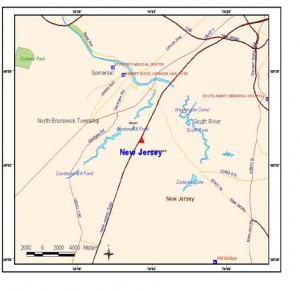 In my preliminary research I ran across the Center of Population Project , which has calculated that in the year 2000, New Jersey’s population was centered in Milltown, just slightly east of the New Jersey Turnpike, between exits 8A and 9. This point is pretty near the center of my definition of Central Jersey – my proposition is looking pretty good about now.
In my preliminary research I ran across the Center of Population Project , which has calculated that in the year 2000, New Jersey’s population was centered in Milltown, just slightly east of the New Jersey Turnpike, between exits 8A and 9. This point is pretty near the center of my definition of Central Jersey – my proposition is looking pretty good about now.
Further research revealed that the geographic center of the state was located 5 miles southeast of Trenton at 74°33.5’W 40°4.2’N, which lies in Plumstead Township, Ocean County, south of Route I -195, east of the NJ Turnpike and north of McGuire Air Force Base. Now that point is just about on the border between Burlington and Ocean Counties, That means the geographic center is on the line between Central Jersey and South Jersey – that can’t be right.
It seems that getting these definitions of North Jersey, South Jersey and possibly Central Jersey accurate is going to be harder than I thought. It appears that I need to dig into this matter further. It’s been bugging me since Pete brainwashed Sara into becoming a Philadelphia Phillies fan when she grew up rooting for the New York Mets.
Please share your thoughts on this thorny issue with me – by answering these two poll questions and posting comments.
[poll id=”3″] [poll id=”4″]
Next – The Jersey Debate – How I got Interested
The author, Carl E. Peters is one of fewer than 10 people licensed by the State of New Jersey as a Professional Engineer, Professional Land Surveyor, Professional Planner, Construction Official, Building Subcode Official and Plumbing Subcode Official. He is also a Certified Municipal Engineer and Mediator and founder of Carl E. Peters, LLC



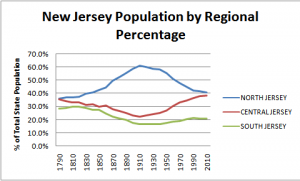
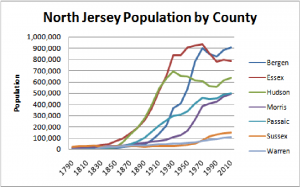
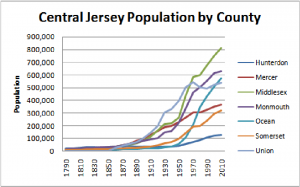
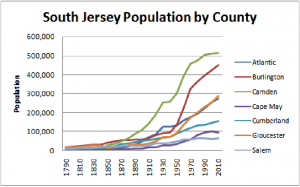


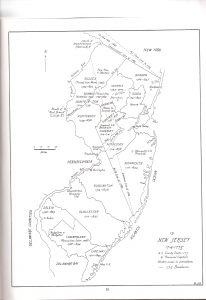
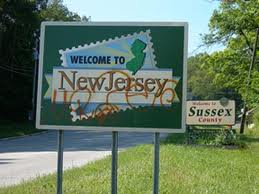

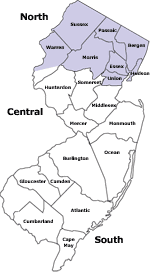

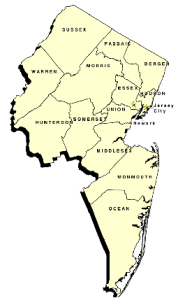


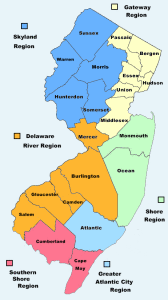

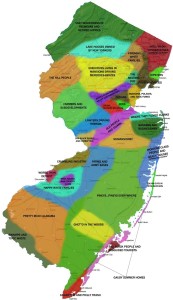
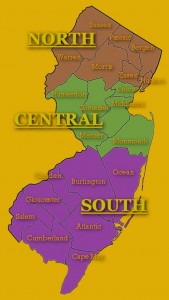
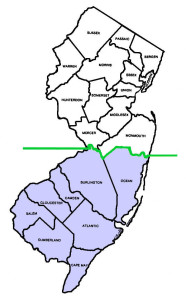
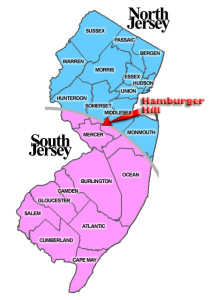

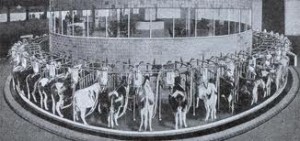
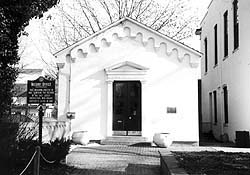

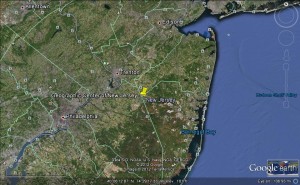
 D5 Creation
D5 Creation